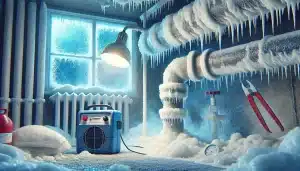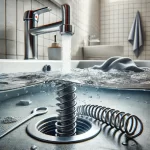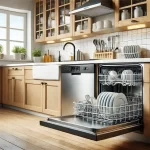Frozen pipes: How to deal effectively with pipes blocked by the cold
 When winter sets in and temperatures drop, the risk of frozen pipes increases considerably. A frozen pipe can cause major damage, from water leaks to burst pipes, and potentially generate high repair costs. To avoid these inconveniences, it's crucial to know how to spot, thaw and prevent frozen pipes in your home or commercial premises.
When winter sets in and temperatures drop, the risk of frozen pipes increases considerably. A frozen pipe can cause major damage, from water leaks to burst pipes, and potentially generate high repair costs. To avoid these inconveniences, it's crucial to know how to spot, thaw and prevent frozen pipes in your home or commercial premises.Understanding the phenomenon of frozen pipes
Why do pipes freeze?
Pipes can freeze as soon as the temperature drops below zero, especially if they are not well insulated. Water pipes located near exterior walls or in unheated areas such as garages or basements are the most vulnerable. Indoor heat has less impact on these pipe sections, making freezing more likely.
What are the risks of frozen pipes?
A frozen pipe presents significant risks. The main danger is pipe bursting, which can cause major water damage to a property. Pressure builds up as the water freezes, taking up more space in the pipe and causing it to burst. This type of incident leads to costly repairs and a direct impact on your water supply.
How to identify a frozen pipe
Common signs of frost in your pipes
It is essential to know how to spot the signs of frozen pipes before they cause major damage. Here are a few clues:
- Reduced water flow If the water flows with difficulty or is completely blocked, this could indicate freezing in the pipe.
- Unusual noises Ice: Slamming or crackling noises can also signal freezing, as ice can affect the natural flow of water.
- Frosted appearance The outside of the pipe may show frost build-up or a visible icy texture.
Act quickly: what to do if a pipe freezes?
If you suspect frost in one of your pipes, take immediate action. Identify the affected section of pipe and use safe methods to reheat it. Here are some effective techniques:
- Use a hair dryer to apply heat directly to the hose.
- Place an electric radiator nearby to maintain a gentle temperature in the area.
- Wrap the pipe with a hot towel to gradually warm up the blocked section.
Prevent pipes from freezing: top tips
How do you protect your pipes in winter?
Prevention is the key to avoiding worry. frozen pipes. Here are a few recommendations to keep your pipes out of harm's way:
- Insulate your exposed pipes with insulating materials, especially those located near exterior walls or in unheated spaces.
- Shut off the outside water supply and drain the pipes before winter.
- Seal air leaks around doors, windows and ducts to prevent cold air from entering near pipes.
What to do in the coldest weather
When the cold becomes extreme, it is advisable to run a thin stream of water in your faucets to maintain water flow in the pipes, reducing the chances of freezing. Also, keep cabinet doors under sinks open so that your home's heat circulates around exposed pipes.
If you have a problem, call in a professional
You've tried everything but the problem persists? Don't take any chances: call an experienced plumber to safely manage the thawing of your pipes. An expert will be able to locate at-risk pipes and apply the best techniques to prevent further damage.


